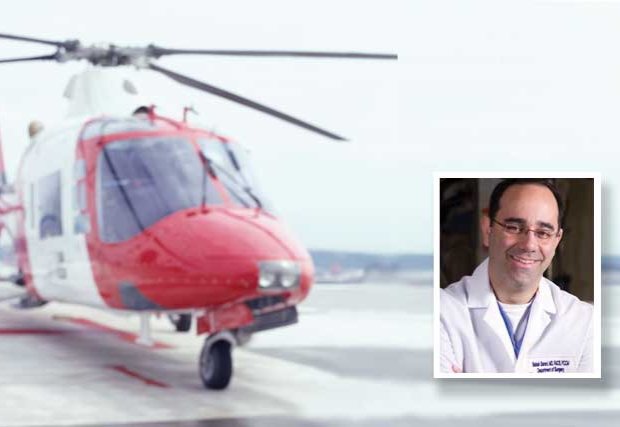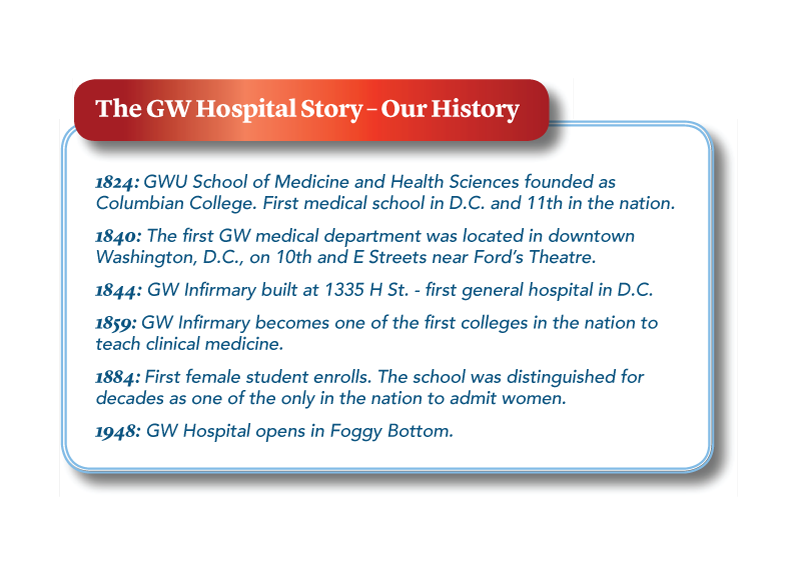It’s been years in the making, and the new helipad at GW Hospital is now open for use, marking a tremendous step forward for the delivery of emergency care in the region. Realizing this vision and getting the project off the ground required an unwavering commitment centered around one goal: saving lives.
The new helipad enables patients with the most serious, life-threatening conditions to be airlifted directly to GW Hospital’s Level I Center for Trauma and Critical Care, saving precious time and giving them access to the most advanced emergency services and resources needed to treat any illness or injury. GW Hospital has the highest trauma designation attainable from the American College of Surgeons. It is also part of an elite group of U.S. hospitals to be designated a Comprehensive Stroke Center, the highest level possible, by The Joint Commission.
“Without direct helipad access, the only air transport route to GW Hospital requires an airlift to another heliport and then an ambulance ride across the city that can be up to 45 minutes in each direction depending on traffic,” says Babak Sarani, MD, FACS, FCCM, Director of Trauma and Acute Care Surgery and Co-Medical Director of Critical Care.
Having the helipad at GW Hospital enables swifter care for time-sensitive events like possible stroke and heart attack, and can benefit the region in other ways as well, he says. “It will make inter-hospital transfers of critically ill patients (such as septic shock or trauma cases) much safer by avoiding both the time delay and need to transfer the patient mid-route with all of their pumps, ventilator and other equipment.”
Learn more about emergency care at GW Hospital >
Also, in the event of a mass casualty event, it will markedly improve the medical community’s capability to serve citizens in the region. “A great example is the Navy Yard shooting a few years ago,” says Dr. Sarani.
“In that event, all roads were blocked, making air transport the only option for expeditious patient delivery.”
During an air transport, care is provided by a skilled medical team supported by ICU-level equipment, including ventilators, a balloon pump for patients in severe heart failure, blood transfusion capabilities and other critical resources that can help keep patients’ vital systems functioning until they reach the trauma center for specialized treatment.
From the earliest discussions about the helipad, Dr. Sarani has worked closely with hospital CEO Kimberly Russo, who was chief operating officer when the idea originated. He says the mission of serving critically ill patients has always been the driving force. “Whether you are an individual who has been shot, or injured or had a stroke, the job of this hospital is to care for the sickest human beings, and the helipad is a means to that end.”
Critical transfers by ground, as well
As GW Hospital unveils its new helipad, it continues to work on other ways to help patients get access to essential treatment in the event of a medical emergency. One of those is the Critical Care Transport Unit, which began serving the region in January 2018.
This specialized ground transport team provides lifesaving medical transfers to critically ill or injured patients, and covers an area that encompasses about a 90-mile radius from the hospital. Through a collaboration with a local service, patients are transported to GW Hospital in an ambulance with ICU-level equipment and specialty medical personnel. Having this resource answers a vital need for patients in the region who are suffering from life-threatening conditions and need swift, skilled medical care.



